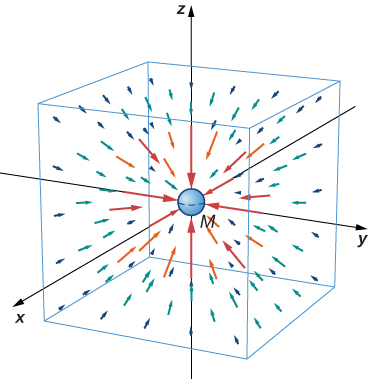| << Chapter < Page | Chapter >> Page > |
Later in this chapter, we will see that the mass of other astronomical bodies also can be determined by the period of small satellites orbiting them. But until Cavendish determined the value of G , the masses of all these bodies were unknown.
From [link] we have
Check Your Understanding How does your weight at the top of a tall building compare with that on the first floor? Do you think engineers need to take into account the change in the value of g when designing structural support for a very tall building?
The tallest buildings in the world are all less than 1 km. Since g is proportional to the distance squared from Earth’s center, a simple ratio shows that the change in g at 1 km above Earth’s surface is less than 0.0001%. There would be no need to consider this in structural design.
[link] is a scalar equation, giving the magnitude of the gravitational acceleration as a function of the distance from the center of the mass that causes the acceleration. But we could have retained the vector form for the force of gravity in [link] , and written the acceleration in vector form as
We identify the vector field represented by as the gravitational field caused by mass . We can picture the field as shown [link] . The lines are directed radially inward and are symmetrically distributed about the mass.

As is true for any vector field, the direction of is parallel to the field lines at any point. The strength of at any point is inversely proportional to the line spacing. Another way to state this is that the magnitude of the field in any region is proportional to the number of lines that pass through a unit surface area, effectively a density of lines. Since the lines are equally spaced in all directions, the number of lines per unit surface area at a distance r from the mass is the total number of lines divided by the surface area of a sphere of radius r , which is proportional to . Hence, this picture perfectly represents the inverse square law, in addition to indicating the direction of the field. In the field picture, we say that a mass m interacts with the gravitational field of mass M . We will use the concept of fields to great advantage in the later chapters on electromagnetism.

Notification Switch
Would you like to follow the 'University physics volume 1' conversation and receive update notifications?